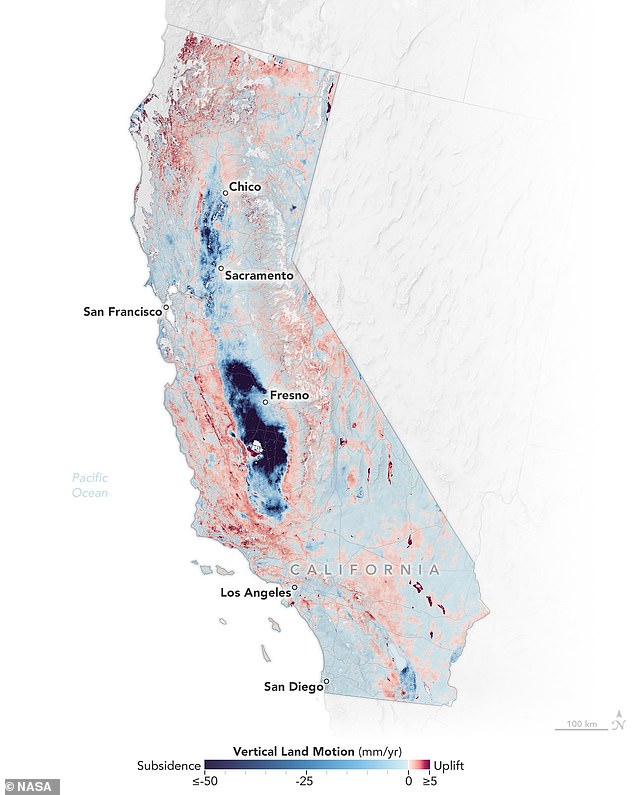
NASA Maps Show 40 Million Coastal Residents Facing Rapid Land Subsidence
NASA Study Warns California Coastal Cities Sinking Faster Than Sea Levels Rise
A NASA-led study reveals alarming rates of land subsidence along California’s coast, exacerbating risks from rising sea levels. Major cities like Los Angeles and San Francisco, home to millions, could face severe flooding twice as fast as previously predicted by 2050.
[Image: NASA map showing coastal California sinking (blue) and rising (red) areas. Caption: Subsidence hotspots (blue) in coastal cities and Central Valley; uplift (red) indicates rising land.]
Key Findings
- Double the Trouble: Parts of San Francisco and Los Angeles may see 17 inches and 1 foot of sea level rise, respectively, by 2050—more than double earlier estimates.
- Sinking Hotspots: San Rafael, Corte Madera, and Foster City in the Bay Area, along with L.A.’s Palos Verdes Peninsula, are sinking due to sediment compaction and landslides.
- Central Valley Crisis: Non-coastal regions like the Central Valley sink up to 8 inches yearly from excessive groundwater pumping, costing $100 million in infrastructure repairs since the 1960s.
[Image: Flooded San Rafael neighborhood simulation. Caption: NOAA predicts 17 inches of sea level rise in San Rafael by 2050, submerging homes and schools.]
Why Is the Land Sinking?
Human activities like groundwater extraction and natural processes, including tectonic shifts, drive subsidence. Satellite radar and GPS data (2015–2023) revealed rapid sinking in vulnerable areas. For example, the Palos Verdes Peninsula is collapsing into the Pacific at 4 inches per week due to landslides.
[Image: Palos Verdes Peninsula landslide. Caption: July 2023 landslide destroyed homes as the peninsula sinks rapidly.]
Ripple Effects
Subsidence worsens coastal erosion, threatening wetlands in San Francisco and Monterey Bay. Combined with global sea level rise from melting glaciers, sinking land could displace communities, flood infrastructure, and escalate costs for adaptation.
Urgent Action Needed
The study, published in Science Advances, urges updated planning policies. As lead author Marin Govorcin states, “Land is sinking faster than seas are rising,” demanding immediate mitigation to protect California’s 40 million residents and coastal economies.
[Image: Aerial view of subsidence damage. Caption: Central Valley farmland impacted by severe ground sinking from groundwater overuse.]
Looking Ahead
By 2050, California’s sea levels could rise 6–14.5 inches above 2000 levels. Without intervention, the financial and human toll will surge, making proactive measures critical for resilience.
Final Word
NASA’s data highlights a dual threat: rising oceans and sinking land. For coastal cities already on the frontline of climate change, the clock is ticking to adapt before it’s too late.
(Word count: ~600)


